Are you new to the word of port forwarding and you need the background knowledge? Then the article below has been written for you as it discusses some of the basics of port forwarding you should know.

In the world of networking, the connection of devices has always involved a good number of tasks in which port forwarding is involved.
Port forwarding is the command that directs a particular request from a computer connected to the internet to a router of the device of interest using the IP address and port number of the devices to send a specific request for access to the user interface on its own computer.
But the said traffic sent must be granted access via configuration before it will be assigned to the specific device of interest housing its port number. And to do this, a router or network browser plays the intermediary.
Basically, this gives access to a computer over the internet to connect with precision to a computer within a private network even though you are behind a router.
For instance, if a device is run from its comfort zone to remotely connect to another device from a different location using Remote Desktop Connections, which enables Microsoft Windows to access a device on the same connection, a clear users interface can only be enabled when the said computer sends its precise IP address with a port number through the internet to your router which will search within the configured and saved port forwarding device in order to know where to send the IP address that the port number has been configured to and grant device accessibility.
In this article, we will be learning about the core fundamentals of port forwarding 101.
What is Port Forwarding?

Port forwarding is the remote accessibility of a private server or network for a specified computer via the internet. In computer networking, port forwarding allows several LAN access to a WAN. With port forwarding comes the configuration of a computer port number and IP address to a router or firewall to grant access to device activities remotely from outside the local networks.
This gives room to Network Address Translation (NAT) to direct commands from a host network (internal) to an external network bypass, therefore allowing requests from a precise IP address and port number to another. Port forwarding allows several web activities that were seen before now to be illegal now legal due to the fact that device uniqueness must be configured and saved on the browser's server or router before access can be granted.

Types of Port Forwarding
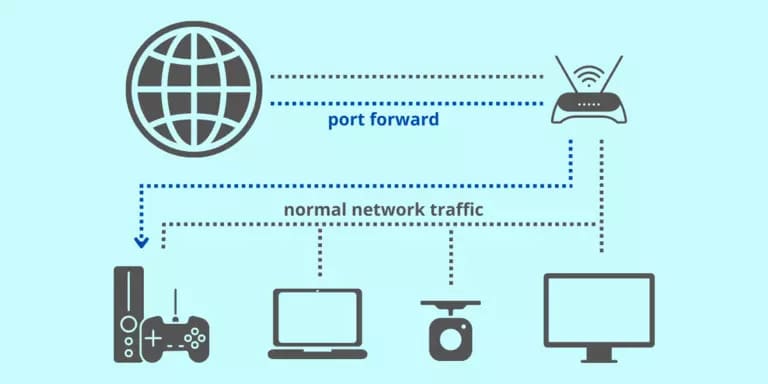
Basically, there are three main types of port forwarding carried out on a router, with each having its own uniqueness.
-
Local Port Forwarding
This type of port forwarding has uniqueness for a secure shell (SSH) server, which safeguards the smooth running of a client's application from a specific location via a secure tunnel. It allows access to several devices to secure connection from its LANs without restriction or blockage from websites of threat-banned web pages.
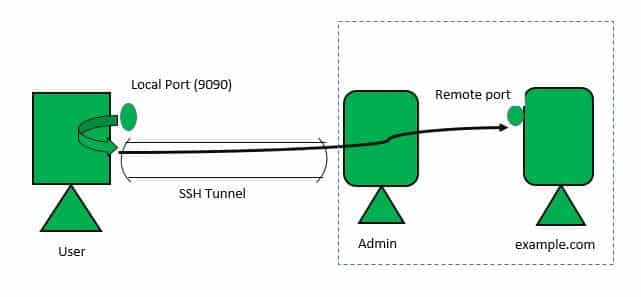
This port forwarding type is pretty common in comparison with remote and dynamic types. One advantage of local port forwarding is that an SSH server is being configured to guide the request of a particular Port to a specific located Port through a secure tunnel of the same running system.
-
Remote Port Forwarding
Just as the name implies, Remote Port Forwarding is the connection of your device remotely to a network server or host. In this type of port forwarding, a sitting-home or workplace, computers are allowed to connect to a secure tunnel situated at a different location or IP addresses and ports of interest.
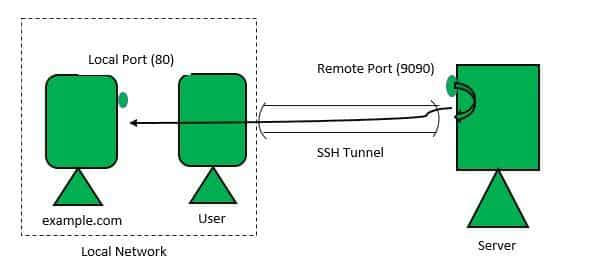
Several computers with their own unique port numbers and IPs are giving access remotely to the server of interest. Unlike local port forwarding, to enable remote port forwarding on a router, the external IP address and port numbers of the host server must be known.
Read more,
- What is a Proxy Port? Default Proxy Port number 8080, 443, 312 & 8230
- How to Unblock 80 and 443 Ports in Windows
-
Dynamic Port Forwarding
This is a type of port forwarding that enables you to securely connect to a network server or host even if the said server is unreliably secured. Using this type of port forwarding comes with the implementation of an SSH server or SOCKS proxy service acting as an intermediary or link to carry out requests over the network.
Dynamic port forwarding is similar to having a sitting central control hub to which other devices of networks are being connected as a life-wire that spoon-feeds and secures the activities of their connected system of interest remotely by receiving and sending the exact request to a specified or several location servers with utmost security.
Pros and Cons of Port Forwarding
As with most things, port forwarding does have its pros and cons. In this section of the article, we will be taking a look at some of the major pros and cons of port forwarding.
Pros
- Port Forwarding helps devices gain access to remote servers or routers.
- The only requirements are client IP and port number, no password enabling.
- In a router or server, more than one algorithm can be initiated on a single computer.
- Private networks can be accessed from home or business services.
- Port forwarding improves connectivity and increases the limited speed of peer reachability.
Cons
- Servers or routers could be endangered by intruders when trying to gain access to restricted websites.
- Router ports can be vulnerable to hackers due to opened ports, hence enabling private network accessibility.
- The server algorithm should be set on every device to enable safe and secured functionality.
- Port forwarding on a VPN requires a username and password to get protected.
What is Port Forwarding Used For?

Since port forwarding deals with setting up a router or browser network to forward certain incoming port requests to specific or remote devices. Below is its usability.
-
For Online Gaming
Port forwarding enables gamers to share their gaming environment by granting access to IP addresses and port numbers to whoever they want to engage with in the gaming platform through the gamer network server or router. The game console interface can be enabled for multiplayer.
-
Security and Privacy
Servers IPS can be masked and protected using port forwarding as without access, authority cannot be granted. This provides some layer of security and privacy for the system.
-
Backups
So long as access is granted and authentication initiated on a device, port forwarding can be used to retrieve backups files anywhere via internet connectivity.
-
FTP
FTP stands for File Transfer Protocol. Files can easily be transferred to remote devices of interest with port forwarding enabled.
How to Port Forward on Router

Before port forwarding can be done on a router, the router's IP address must be known, the device to be used and as well the port number of the internet server, and a router username and password. Having that in handy, below are the steps to port forward on your router.
Step 1: Log into the router configuration page.
Step 2: Type in the router internet IP address using a web browser. If you don't know what your router internet IP address is, open a command prompt on a Windows computer and type in ipconfig, and press enter. Your router's internal IP address will display with the name Default Gateway as well as your computer IP address.
Step 3: Enter the IP address of the router in a browser, and it will take you to your router configuration page. Configuration differs with different brands of routers.
Step 4: Go to the port forwarding section to configure port forwarding.
Step 5: Enter the application name, internal and external port number, TCP or UDP port protocols (enabled both if needed), and enter the device's IP address.
Step 6: Save settings and enable.
How to Port Forwarding on VPN

Port forwarding on VPN varies with respect to VPN providers. Below are the general ways to port forward on a VPN.
Step 1: Enable port forwarding in the settings menu of your VPN app.
Step 2: Choose the ports you want to open on the VPN. Write down the port number.
Step 3: On the program that uses port forwarding, change the listening port to the port number written down above.
Step 4: Disable UPnP and NAT-PMP in the VPN program settings.
Step 5: Click on applyvto save.
You maybe like to read,
- Residential VPN: Paid & Free Residential IP VPN Services
- Hola Alternatives: 10 REALLY FREE VPNs Similar to Hola VPN
Port Forwarding vs. Port Mapping
Port forwarding and port mapping are two synonyms of networking terms or techniques used interchangeably. Research has shown that in a web page search, these two terms have been used for as long as they existed, and no counter-intuition to it.
One might search for port forwarding, and the search engine result will bring out both as the same. Port forwarding or port mapping is the act of forwarding requests from one specific port on a node to another specific Port on a different node with the router or other browsing network as the intermediary.
Port Forwarding vs. Port Triggering
Port forwarding and port triggering are two different techniques in the networking world. Having known what port forwarding is, port triggering is the opposite in terms because it is dynamic and triggers its own commands.
While port forwarding can be used to grant access to a system within the private network on the internet, Port Triggering uses an outgoing port as a trigger to open and access a specific incoming Port.
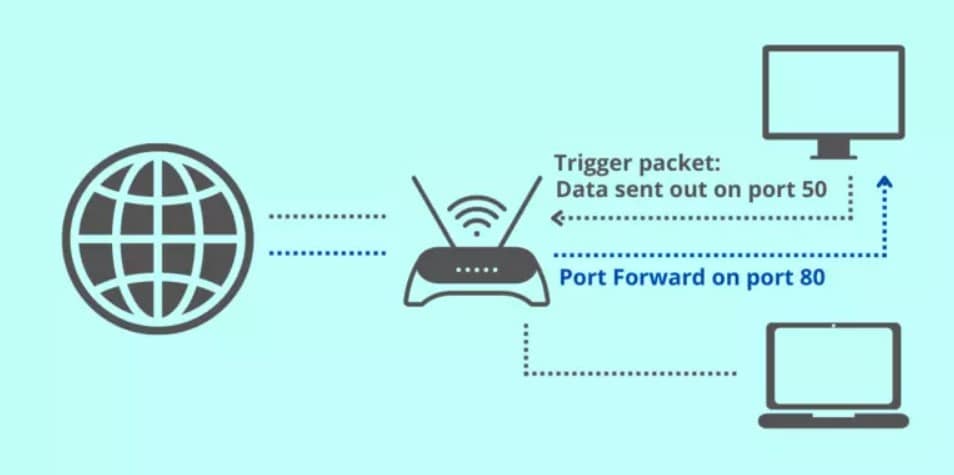
Port Forwarding sends and receives traffic from a specific port, and Port Triggering triggers port by telling the router a particular port to open. Port Forwarding is less secured compared to Port Triggering because port forwarding access on open ports while port triggering access on close ports, which only open when triggered.
IP addresses and port numbers need to be known using Port Forwarding, but the opposite is the case in terms of Port Triggering, as IP addresses and port numbers are being identified automatically via triggering commands.
Port forwarding is said to have static IPs because when using port forwarding, a port is constantly and continuously left open. In contrast, Port Triggering is said to have dynamic IPs because it opens and closes ports for a specific period of time.
Common Problems of Port Forwarding
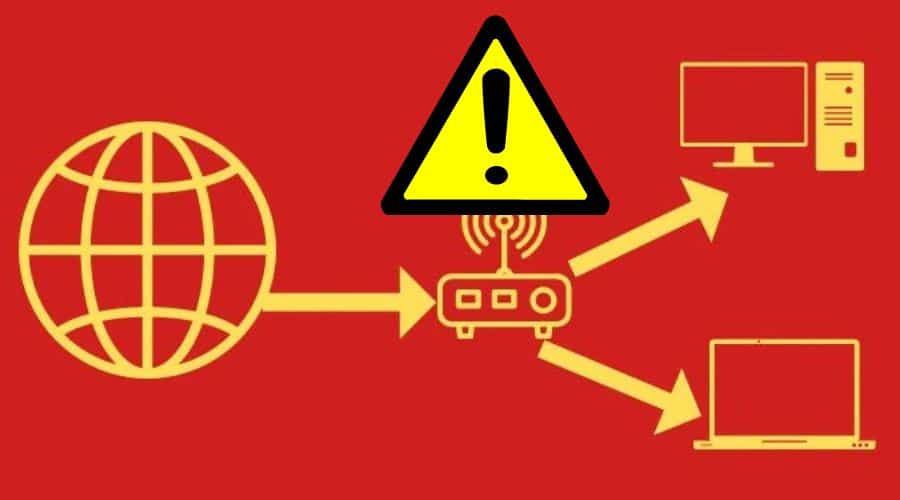
Just as port forwarding functionality is embraced by most IT professionals and programmers, it sometimes has a few discomforting parts. Here come the common problems of port forwarding.
-
Router not supporting port forwarding
This is a common problem many users often complain about. Some routers did not come with manual port forwarding enabling. As someone who does not know of this, purchasing a router of such standard can be frustrating.
-
Port Forwarding Disable
This is also a common problem that mostly arises when forwarded router firmware is being updated. Some incompatible versions can disable the already existing configured settings, which will require reconfiguring after having completed the new updated version.
-
Using Multiple Router
Granting device access to connect with several routers can disengage port forwarding processes. All configured devices should work via a single router.
-
Multiple rules to a port
Two port forwarding ports cannot be run on the same rule book. A specific rule goes with a specific device.
Dangers of Port Forwarding
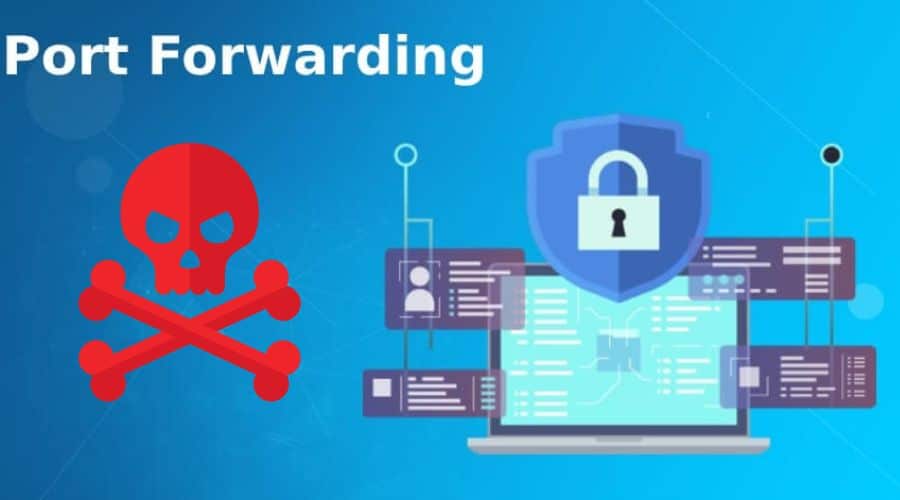
Port forwarding is a good way to access a remote network, but the risk can be attached to the process, and that is the major reason why not all VPNs can be used for port forwarding. Some of these dangers include.
- When using port forwarding, it enables continuous opening of ports, and this, hackers can easily take advantage of and penetrate your server or router.
- The activities to be forwarded define the danger level to account for. This is the more reason why most VPNs do not support port forwarding.
- Remotely opening of several ports can increase the risk level of a home or business network. Once a port is accessible and used, it is advisable to get it closed when not running any commands on it.
However, it is advisable that more structured passwords be assigned to devices that have been exposed to port forwarding in order to prevent cyber invasion and port device protection.
FAQs About Port Forwarding
Q. Should I Use Port Forwarding?
If you are in a situaltion where you need port forwarding, you should definitely use port forwarding. This is because it adds an extra layer of security to networks. With port forwarding, you preserve public IP addresses and protect servers and clients from unwanted access.
This is because you can hide the servers and services in a network, thereby making them difficult for those that will want to interact with them outside of the network. however , despite it usage, you should only make use of it when you need it and no create an unnecessary bottleneck.
Q. What is an Example of Port Forwarding?
Since this blog is a proxy review blog, let me give you an excellent example you can relate with easily. Take, for instance, if you want to use 911 s5 proxies in the Multilogin app. The proxy service does not offer proxy port and address as others do. Instead, you will need to setup port forwarding from the 911 s5 proxy client which will create a local network.
All you need is to get the host and port number and use it in Multilogin as your proxy details and anytime you send web requests, it will be forwarded to the 911 s5 proxy. Same method is also used if you want to use the proxy service on phone.
Read more,
Q. Is Port Forwarding Safe for Gaming?
One of the use cases of port forwarding is online gaming. But is it safe? Generally, port forwarding is safe for gaming provided there is no malware on your device. Before you make use of port forwarding, make sure there is no malware on the device you want to use it on.
However, you need to know that unless you close the port, ports used for port forwarding will remain open regardless of whether the game is still ON or OFF. For safety reasons, always remember to cancel it.
Conclusion
Enabling port forwarding in a router has been seen to remotely create accessibility to devices of interest. This might be good, but it has its own negativity, and that's the reason why many VPNs don't subscribe or buy into it because of the exposure of ports which can easily be penetrated by unsolicited and unauthorized hackers who can endanger the device router.
Learn Some hacking tricks to protect yourself online,
- 4 Proven Ways to Hack a Gmail Account?
- How to Hack a Snapchat Account?
- How to Hack a TikTok Account?
- How to Hack an Instagram Account?
- How to Hack Someone's Computer with Their IP Address
Port forwarding is great, but not all that is rossy comes in handy as a lot of damages can be caused by the constant continuous opening of ports, thereby triggering unwanted innovation. Hence it is advisable to close the port immediately after usage. If you have read this article, you should have an idea of what port forwarding is.






